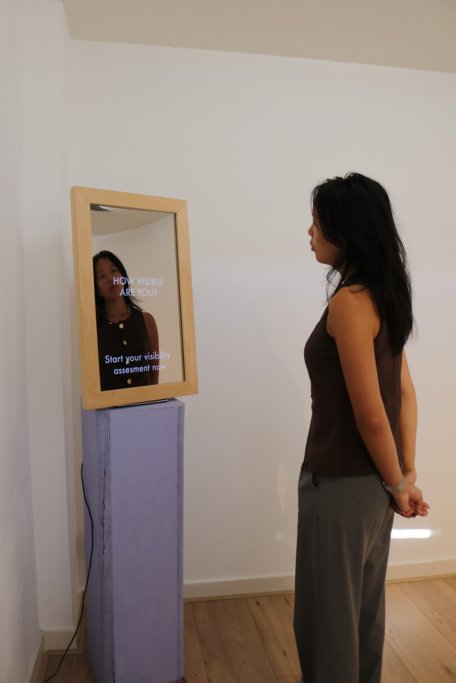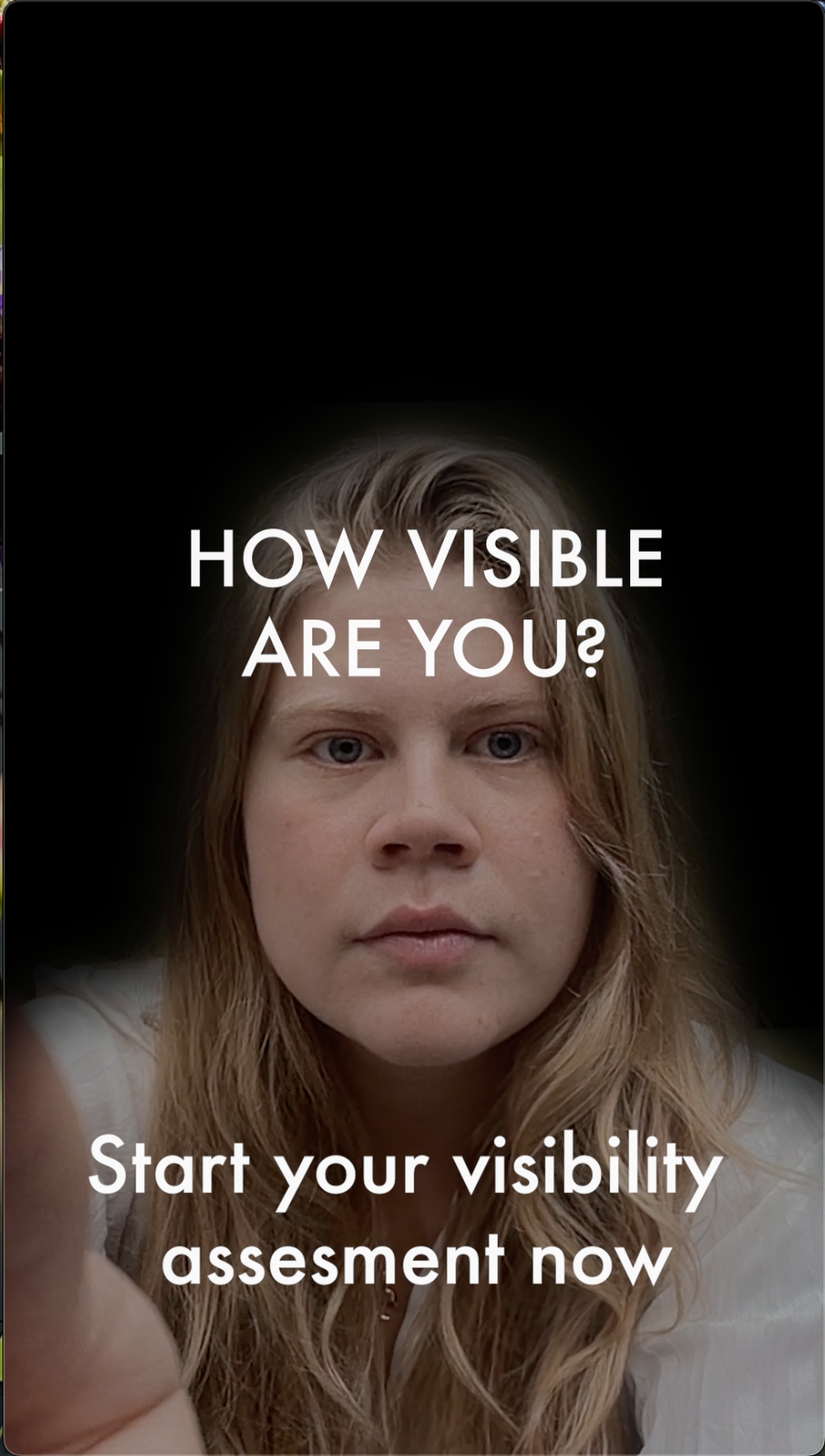Cities are rapidly adopting digital twins and AI systems to plan, predict, and optimise urban life. These models promise smarter, more efficient decisions, yet their logic depends on patterns and data that do not capture everyone equally. People with irregular routines, low-data habits, or forms of care that resist measurement can slip from view. When visibility becomes conditional on being legible to an algorithm, inclusion is no longer assured. This raises a pressing design problem:
how can we confront the quiet exclusions built into automated systems, and how might design help us see what is overlooked when optimisation defines the rhythms of the city?
The Behavioural Mirror is a speculative artefact that translates systemic logics into a tangible experience. Visitors stand before a reflective surface that invites them to “start a visibility assessment”. A short film introduces Sem, a nurse whose irregular behavioural patterns make her less readable to the system. As her visibility decreases, viewers are prompted to reflect on their own presence within such models. The mirror overlays unappealing scores and glitching fragments, making legibility itself unstable. Developed through research-through-design, we combined speculative scenarios, prototyping, and tests with municipal professionals and advisors. Rather than offering technical fixes, we use ambiguity and provocation to open a dialogue. Supporting elements such as a poster and reflection cards allow the work to travel between exhibitions, workshops, and policy discussions, where it acts as a mirror for practice.
The Behavioural Mirror matters because it shows how optimisation can quietly reinforce inequality in data-driven governance. Test sessions with city staff and colleagues showed the artefact helped them reflect on who becomes visible, who disappears, and which choices shape that boundary. Its strength lies not in prediction but in provocation: it opens up space for ethical reflection and more inclusive practices. A limitation is that the mirror relies on framing; without explanation it risks being mistaken for a product demo rather than a critique. Still, by slowing down assumptions of neutrality and inevitability, we show how speculative design can contribute to the theme of an equal society, reminding us that fairness is never automatic.


